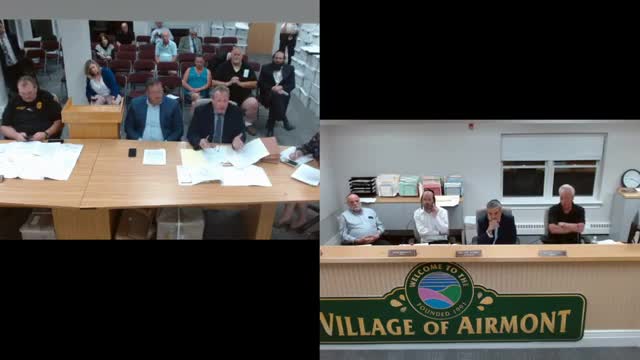Fire safety debate ignites over standpipe requirements
June 17, 2024 | Airmont, Rockland County, New York

This article was created by AI summarizing key points discussed. AI makes mistakes, so for full details and context, please refer to the video of the full meeting. Please report any errors so we can fix them. Report an error »

During a recent government meeting, discussions centered around the installation of standpipes in new building developments in Rockland County, with Mark Moses, a builder involved in the project, addressing the board on the challenges faced in meeting fire safety requirements.
Moses highlighted the difficulties in achieving the necessary water pressure for standpipes, which are crucial for firefighting efforts within multi-story buildings. He explained that standpipes provide a reliable water source on each floor, allowing firefighters to access water more efficiently during emergencies. The conversation also touched on the specific measurements required by state code, particularly concerning the height of the building and its proximity to fire hydrants.
Inspector Zulo provided insights into the regulatory framework, noting that under the National Fire Protection Association (NFPA) 14 guidelines and New York state code, standpipes are typically required for buildings that are three stories above grade. However, he acknowledged that the building in question has a partially buried floor, which could complicate the determination of whether a standpipe is necessary.
The inspector emphasized the practical benefits of having a standpipe, particularly in reducing the physical burden on firefighters who would otherwise need to carry hoses up multiple flights of stairs. He indicated that while the state code may not mandate a standpipe in this case, he retains the authority to request one based on safety considerations.
The meeting underscored the ongoing dialogue between builders and fire safety officials as they navigate the complexities of building codes and public safety requirements. The outcome of these discussions will ultimately influence the design and safety features of new developments in the area.
Moses highlighted the difficulties in achieving the necessary water pressure for standpipes, which are crucial for firefighting efforts within multi-story buildings. He explained that standpipes provide a reliable water source on each floor, allowing firefighters to access water more efficiently during emergencies. The conversation also touched on the specific measurements required by state code, particularly concerning the height of the building and its proximity to fire hydrants.
Inspector Zulo provided insights into the regulatory framework, noting that under the National Fire Protection Association (NFPA) 14 guidelines and New York state code, standpipes are typically required for buildings that are three stories above grade. However, he acknowledged that the building in question has a partially buried floor, which could complicate the determination of whether a standpipe is necessary.
The inspector emphasized the practical benefits of having a standpipe, particularly in reducing the physical burden on firefighters who would otherwise need to carry hoses up multiple flights of stairs. He indicated that while the state code may not mandate a standpipe in this case, he retains the authority to request one based on safety considerations.
The meeting underscored the ongoing dialogue between builders and fire safety officials as they navigate the complexities of building codes and public safety requirements. The outcome of these discussions will ultimately influence the design and safety features of new developments in the area.
View full meeting
This article is based on a recent meeting—watch the full video and explore the complete transcript for deeper insights into the discussion.
View full meeting
